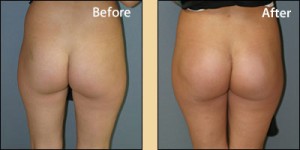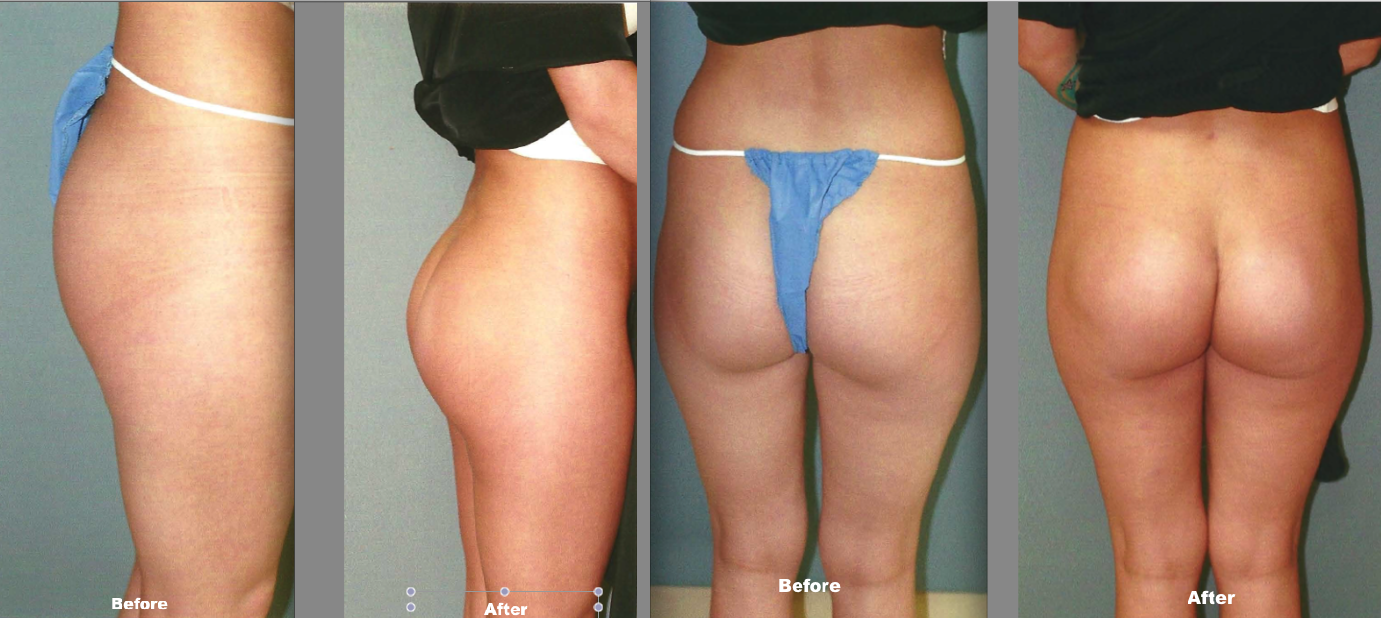Buttock Augmentation and Contouring

Buttock contouring has been growing in popularity and creating some outstanding results. While some surgeons have shied away from these procedures we have found them to be a great contribution to over all body contouring.
I break buttock contouring (gluteal augmentation/contouring) into three main categories. The first group are patients that just need more definition to the buttock relative to the back, lateral thigh, and posterior thigh transition zones. These patients can accomplish a more refined and defined buttock with liposuction alone, providing the appearance of a larger gluteal region by removing fat above and below as well as lateral to the buttock mound. It can be surprising how much larger a buttock can appear though these body sculpting techniques. Frequently in our practice patients truly desire a much fuller buttock and then we have to focus on the true augmenting of the buttock with either the patient’s own fat or with a specially designed silicone implant for the gluteal region. Though not always most patients getting buttock silicone implants or fat injections still benefit from the lipo-sculpting around the lower back and thighs; like all things it’s a case by case situation. Both fat injections and gluteal augmentation with implants can give outstanding results but each has some good sides and some down sides. Let’s start by discussing gluteal augmentation with the patient’s own fat cells. Techniques in fat injection improve every year and this has become a very common procedure for tissue augmentation and contouring all over the body. Still it can be a bit more reliable for fat to survive when it is performed in lower to moderate volumes; the more fat we need to inject the more likely some of that fat may not survive. Typical patients for buttock augmentation need anywhere from 250 cc to 600 cc to each buttock to accomplish the desired increase in size. Of course how wide, how long, or how full the native buttock is will determine how much fat that patient needs to get a nice round projecting buttock. The patient has to have enough body fat to liposuction to meet those needs. A small slim patient may not have enough assessable fat to liposuction to make fat injections a good option. A larger patient with more body fat will have more fat cells to harvest for reinjection, but they will also need a bit more volume to get a full buttock. Often we need to get twice as much fat liposuctioned out than the volume we but back for we clean the fat and process it to get the healthier cells and hopefully more fat stem cells so that more of it will survive. The up sides of the patient’s own fat is it truely is “you” that we are using to augment the buttock mound, and when it survives well it looks great and feels great. The down side of fat injections is we just can’t gaurantee that all the fat will survive or that it will survive equally between the two sides so the patient might have to have a second set of injections to tailor the result. Also if some spots of the injected fat does not survive it may be firmer than the surrounding areas and give a little irregular feeling. We go to great lengths to get the fat dispersed very evenly across the buttock mound and also dispersed and numerous different levels in the tissues and muscle to give it the best chance for survival. The younger the patient typically the more fat that will survive in this area; patient’s over the age of 55 might be less likely to have good fat graft take. Certainly this age of 55 is a bit arbitrary , but it’s a rule of thumb I go by. If someone is a smoker, diabetic, or has vascular disease they also are less likely to have fat grafts survive and do well.
Now let’s look at implant buttock augmentation. Of course one can argue it’s not my own fat so it’s maybe not as ideal, but that’s not the whole story. When you use a gluteal implant you know the volumes are the same on each side and you don’t have to worry that the implant volume might decrease with time like fat can. Also there is less surgical time when placing an implant for you don’t have the same amount of liposuction time, fat preparation times and times to carefully place the fat grafts. Implants can reliably give the volume and contour the patient desires. The gluteal implant is a foreign body implant however and there is some low risks of infection that go with it. Also it requires a large enough incision to place the implant that might have some wound healing issue given it’s location near the anus. Some patients might find the pain localized to the buttock to be significantly more with the implant than with fat injections alone. Implants for buttock augmentation are placed either subfascially (a tough layer on top of the muscle), intra, or sub muscularly. The implants should not be placed just under the fat of the buttock for that can create more short and long term problems. Individual physicians often discuss whether they favor the subfascial or sub muscular approaches; personally I have performed both and found each can give a great result and I let the patient anatomy shape of the buttock and size of the desired implant guide me as to which approach is best for which patient. Anyway you look at it gluteal augmentation is a great procedure for the patient looking for more full and defined buttocks, and both fat injections and silicone implants can provide an excellent result. Contact us at 520 575-8400 if you desire more information or a formal consultation concerning buttock augmentation…….Jeffrey M. Nelson MD

 520-575-8400
520-575-8400












